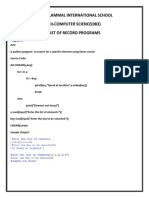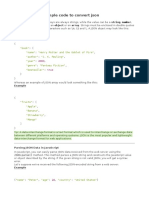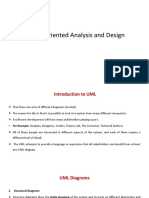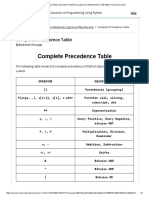0% found this document useful (0 votes)
97 views43 pagesXii - CS - Lab Programs (2022-23)
The document outlines 20 Python programs completed as part of a practical program, including programs to check palindrome and prime numbers, generate random numbers, count characters in strings, create records using dictionaries, build menu driven programs, read and analyze text files, and interface with MySQL databases. The programs cover a range of fundamental Python concepts like functions, loops, files, and databases.
Uploaded by
Sanjay SiddharthCopyright
© © All Rights Reserved
We take content rights seriously. If you suspect this is your content, claim it here.
Available Formats
Download as PDF, TXT or read online on Scribd
0% found this document useful (0 votes)
97 views43 pagesXii - CS - Lab Programs (2022-23)
The document outlines 20 Python programs completed as part of a practical program, including programs to check palindrome and prime numbers, generate random numbers, count characters in strings, create records using dictionaries, build menu driven programs, read and analyze text files, and interface with MySQL databases. The programs cover a range of fundamental Python concepts like functions, loops, files, and databases.
Uploaded by
Sanjay SiddharthCopyright
© © All Rights Reserved
We take content rights seriously. If you suspect this is your content, claim it here.
Available Formats
Download as PDF, TXT or read online on Scribd
/ 43























































































